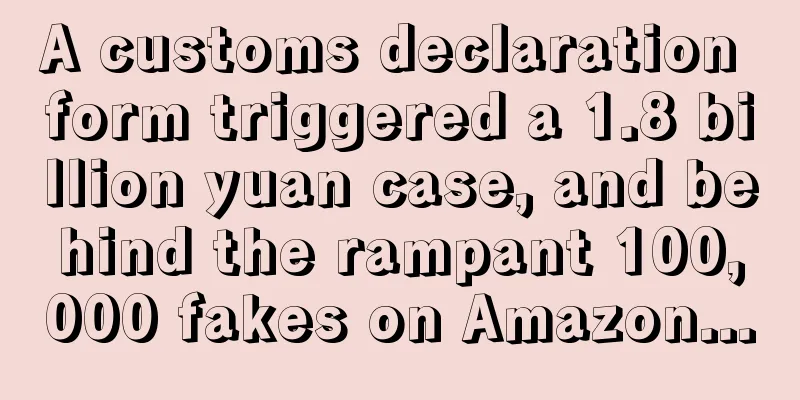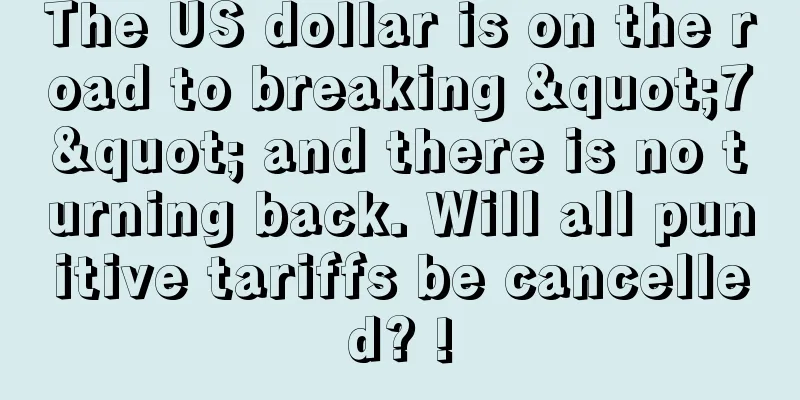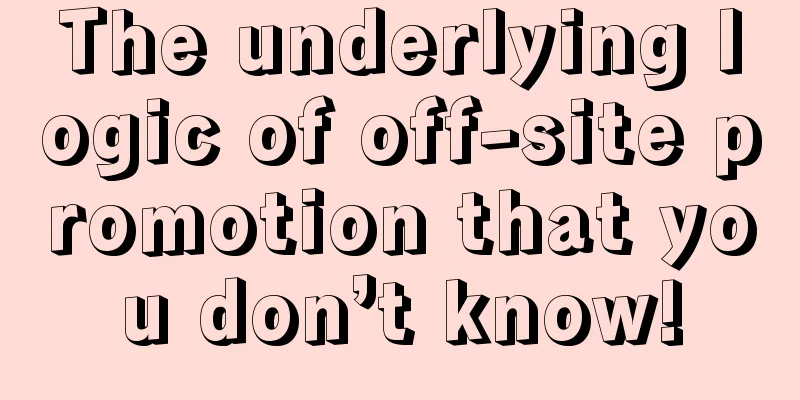A customs declaration form triggered a 1.8 billion yuan case, and behind the rampant 100,000 fakes on Amazon...

|
The year-end peak season is here, and cross-border sellers all want to seize this opportunity to make a fortune and have a good year, so many people choose to "take a shortcut ." Recently, Xiaozhi saw a news report that a cross-border counterfeiting and selling gang was jointly smashed by the Chinese police and the UAE police. 57 domestic and foreign criminal suspects were arrested, and more than 28,000 counterfeit luxury goods such as Louis Vuitton, Hermes, Chanel, etc. were seized. The amount involved in the case was nearly RMB 1.8 billion . A "customs declaration form" leads to 1.8 billion cross-border counterfeiting case This cross-border crackdown originated from a customs declaration form in an overseas warehouse that was printed with the name and logo of a Chinese company .
During a recent crackdown on counterfeit goods, the UAE police found a customs declaration with the company name and logo of " Guangzhou Little Camel " printed on it in a warehouse where counterfeit goods were stored. What kind of company is "Guangzhou Little Camel"? What is the relationship between the company and those counterfeit brand bags? Through investigation, Shanghai police found that the company's directors were two overseas personnel, and the company's service objects were all fixed overseas customers. It never accepted business from unfamiliar customers. When receiving orders from overseas customers, the company would cooperate with counterfeiting dens in the country, recruit temporary workers with counterfeiting experience, and produce various types of counterfeit brand bags on demand.
According to the police, the counterfeiting and selling gang has been entrenched in the UAE for many years. Despite the continuous crackdown by the local police, they not only did not stop, but continued to grow. They developed distributors in different countries abroad, with more than 200 at most, covering the Middle East. Brand-name bags are counterfeited A luxury product worth 10,000 yuan costs less than 300 yuan During one operation, the police also seized a private workshop that was producing counterfeit goods . Although the workshop was small and had only a dozen workers, the division of labor was clear. When the factory manager bought the real bags, they would disassemble the real bags, make samples, use paper as a template to purchase leather materials from the market, and then be responsible for cutting the leather materials, gluing and shaping the leather materials, beautifying the edges of the leather materials, and sewing the leather materials. Through this assembly line operation , they produced highly similar counterfeit brand bags . When these high-end imitation bags are produced, they will be accompanied by forged "original authentic" certificates and "Customs Import Goods Declaration Form" and "Customs Import VAT Special Payment Receipt", packed together into containers, and shipped to Dubai, UAE by sea or air, where they are discounted as genuine products and sold to multiple countries at prices ranging from several thousand to tens of thousands of yuan . According to the arrested criminal suspect Wang, the total cost of producing a high-end imitation bag, including labor costs and leather materials, is only about 100 to 200 yuan . If the bag is difficult to make, 20 to 30 can be made a day, and if it is easy to make, 30 to 40 can be produced a day. The cost is only 100 or 200 yuan, and the sales are from several thousand to tens of thousands of yuan. The profit of several thousand or even tens of thousands of percent is incredible to Xiaozhi. It turns out that selling fake goods is so profitable. No wonder so many people are willing to take the risk. This is also common on Amazon. Recently, a consumer found a Hermès bracelet for $24.99 on Amazon . An Alaskan consumer searched for Hermès Clic H on Amazon and saw a bracelet for only $24.99 . The bracelet looked like an authentic Hermès product, with the H logo also serving as the clasp and the name etched on the inside, but the bracelet was sold by a third party. It is reported that the real Hermès Clic H bracelet costs as much as $640 . As early as last August, the US non-profit organization "Counterfeit Report" pointed out that a total of 59,749 counterfeit products were found on Amazon in the two years from 2016 to 2017. So far, more than 100,000 counterfeit products have been found on Amazon . Previously, when the U.S. Government Accountability Office (GAO) investigated e-commerce websites, it found that half of the items purchased on e-commerce platforms, including Amazon, were counterfeit . These super-high-quality counterfeits not only make consumers miserable, but also cause dissatisfaction among many genuine brand merchants, who have criticized Amazon. Among all the brands, "Apple" is the "hardest hit area" . According to foreign media reports, more than 90% of Apple data cables and chargers sold on Amazon are suspected to be counterfeit.
Apple's electronic accessories are relatively easy to counterfeit, and their ultra-low prices attract countless consumers. Under this phenomenon, genuine Apple manufacturers appear to have a particularly "difficult time." Birkenstock, a well-known shoe brand, even directly said that "Amazon is an accomplice of counterfeiters." In 2016, German sandal brand Birkenstock was plagued by counterfeits. When the Amazon page was opened, the screen was full of knockoffs and imitations. This century-old brand angrily "quit the platform" and announced that it would stop selling products on Amazon in the United States.
By December 2017, Birkenstock announced again that it would completely terminate its business partnership with Amazon's European branch. In October 2017, Mercedes-Benz's parent company Daimler AG filed a lawsuit in court, accusing Amazon of infringement. Amazon has been rejected by many big brands because of the rampant counterfeiting. LVMH , which owns brands such as Louis Vuitton and Dior; Swatch Group, a Swiss watch manufacturer that owns brands such as Longines, Omega and Blancpain ; Kering, which owns brands such as Gucci, Bottega Veneta and Saint Laurent , have also refused to enter Amazon . Nike has finally been unable to tolerate the proliferation of counterfeit goods on Amazon and has chosen to "break up" with Amazon. On November 13, Nike announced that it would stop selling products directly on Amazon's website, ending the pilot program it had reached with Amazon in 2017.
Amazon said it spent $400 million last year to combat fraud and counterfeiting , but as the fake Hermès bracelets that appeared on the website show, Amazon's system has failed to prevent the circulation of counterfeit goods. What is the reason? First, the variety and quantity of goods are crucial to Amazon. The more diverse the two are, the more attractive it is to consumers. Moreover, the resulting competition will lead to lower prices, further strengthening its appeal. In order to increase the variety and quantity of goods, Amazon has vigorously introduced third-party sellers, which has given counterfeit goods an opportunity to take advantage of. If counterfeiting is cracked down on vigorously, the growth rate of product types and quantities will be slowed down. Weighing the pros and cons of these two evils, Amazon will naturally choose to tolerate and accept the existence of counterfeit goods, regarding it as a "necessary evil." This is the key logic behind the rampant counterfeiting on Amazon. Secondly, Amazon currently does not need to bear greater financial responsibility for the quality of third-party sellers’ products, which is also an important reason why they are not very active in fighting counterfeiting... Finally, in order to make money, Amazon frantically sells advertisements to sellers, which easily leads to the appearance of products with lax audits. Some time ago, foreign media broke the news that Amazon sold "holiday gift list" sponsorships for up to $2 million. According to statistics, Amazon's advertising revenue in 2018 increased by 117% to $10.1 billion compared to 2017, becoming the fastest growing business, far exceeding the 29% growth rate of its main business of online retail.
Amazon said that it cannot control the "selling of fake goods" because one-third of the sellers are in China .
It is reported that Amazon consumers have reported 5,101 counterfeit products in the past two years, with third-party sellers being the hardest hit . About one-third of Amazon's third-party sellers are from mainland China . Therefore, my brother-in-law attributed the problem to "Chinese sellers." In recent years, fake and shoddy goods with the label of "exported from China" have emerged one after another, which has damaged the reputation of "Made in China" and led to a certain prejudice against Chinese sellers abroad. It is true that fakes are rampant on Amazon, and it is not ruled out that there are a small number of Chinese sellers, but two-thirds of the sellers on Amazon are from other places. Have they never sold fakes?
Besides, the large number of third-party sellers on Amazon is not caused by my brother-in-law’s expansion. Therefore, fundamentally speaking, the problem of counterfeit goods is still caused by Amazon’s expansion , and it is my brother-in- law ’s own fault. Therefore, it is basically impossible to completely solve it unless Amazon “slims down”. But if you want Amazon to regress by decades, ask my brother-in-law if he agrees? |
Recommend
The seller's amazing operation! How to bypass Amazon's inspection by requesting review cards!
Reviews have always been the top priority for sel...
Shein US site launched, Anker is one of the first brands to join
It is learned that according to MarketplacePulse, ...
Registration for Amazon’s low-price mall is open, and you can share the main site’s BSR ranking!
Recently, Amazon’s low-price mall Amazon Haul was ...
What is Dragon Wizard? Dragon Wizard Review
Dragon Guide, founded on October 14, 2004, focuses...
What are Lighting Deals? Lighting Deals Review
Lighting Deal is a time-sensitive flash sale activ...
What is Google Patents? Google Patents Review
Google Patents is a new search service released by...
The US government plans to reform the bill! Cut USPS spending by $50 billion!
The U.S. House of Representatives will vote on Tue...
Walmart's Q1 financial report released, e-commerce business returns to growth curve
It is learned that on May 18, Walmart released its...
What is woordee? woordee review
Yuyi is a platform under Chuanshen Yulian that is ...
What is Facebook Shops? Facebook Shops Review
On May 20, Facebook CEO Mark Zuckerberg announced ...
A major overhaul of the site's advertising! New social features added
Click on the blue words to follow and learn about...
What is 17TRACK Logistics Express Parcel Tracking Platform? 17TRACK Logistics Express Parcel Tracking Platform Review
17TRACK is a global logistics and express parcel t...
Square launches Square Register in Canada! Helping sellers grow their business!
It is learned that according to foreign media repo...
What is EAN? EAN Review
The barcode standard designated by the European Ar...
Amazon officially announced a big promotion for Prime members! New tools to help sellers get free traffic?
It is learned that early this morning, Amazon Glob...









